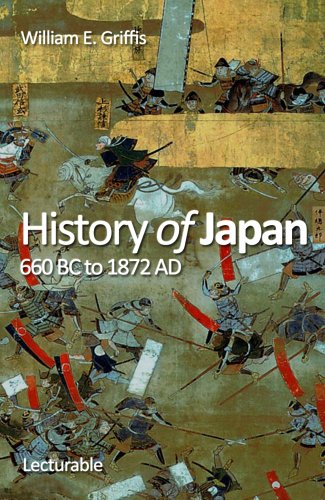History of Japan: From 660 BC to 1872 AD
Introduction:
Japan, an archipelago consisting of four main islands located in East Asia, has a rich and fascinating history that dates back over two and a half millennia. From the legendary beginnings of its imperial line in 660 BC to the dramatic changes during the Meiji Era in 1872, Japan has undergone significant transformations, shaping its culture, society, and government. In this article, we will delve into the key highlights and milestones of Japanese history, exploring the various political systems, cultural influences, and societal developments that have shaped the nation.
I. Ancient Japan: The Age of Emperors
A. The Founding of Japan and the Yamato Dynasty (660 BC – 538 AD)
1. The legendary origins of Japan
2. The emergence of the Yamato clan as the ruling dynasty
3. Shintoism: The indigenous religion of Japan
B. The Nara Period (538 AD – 794 AD)
1. The introduction of Buddhism from China and Korea
2. The establishment of Nara as the first permanent capital
3. The Chinese influence on Japanese governance and culture
C. The Heian Period (794 AD – 1185 AD)
1. The rise of the nobility and the Fujiwara clan
2. Cultural achievements, including literature and poetry
3. The Tale of Genji: A masterpiece of Japanese literature
II. Feudal Japan: The Age of Shoguns
A. The Kamakura Period (1185 AD – 1333 AD)
1. The Minamoto clan’s rise to power
2. The establishment of Kamakura as the feudal capital
3. The influence of Zen Buddhism on samurai culture
B. The Muromachi Period (1333 AD – 1573 AD)
1. The Ashikaga shogunate and the Onin War
2. The cultural flourishing of the arts, including Noh theater
3. The emergence of regional warlords and the Warring States period
C. The Azuchi-Momoyama Period (1573 AD – 1603 AD)
1. The unification of Japan under Oda Nobunaga and Toyotomi Hideyoshi
2. The introduction of firearms and European influences
3. The construction of iconic castles, such as Osaka Castle
III. The Tokugawa Shogunate: The Age of Isolation
A. The Edo Period (1603 AD – 1868 AD)
1. The establishment of the Tokugawa shogunate
2. The implementation of the strict isolationist policy, Sakoku
3. The growth of cities and the rise of a merchant class
B. The Meiji Restoration (1868 AD – 1912 AD)
1. The overthrow of the Tokugawa shogunate
2. The rapid modernization and westernization of Japan
3. The introduction of a constitutional monarchy and the Meiji Constitution
Conclusion:
Throughout its history, Japan has experienced numerous transformative periods, from the legendary beginnings and the age of emperors to the feudal era under the rule of powerful shoguns, and finally, the restoration and modernization of the Meiji Period. These various stages have shaped Japan into the vibrant and unique nation we know today. As we reflect on the rich tapestry of Japanese history, it becomes apparent that understanding the past is crucial for comprehending the present and envisioning the future.
FAQs:
1. Q: What is the significance of the Meiji Restoration?
A: The Meiji Restoration marked the end of the samurai era and initiated a period of rapid modernization and westernization in Japan.
2. Q: What role did Buddhism play during ancient Japan?
A: Buddhism was introduced from China and Korea during the Nara period and had a profound impact on Japanese art, culture, and religion.
3. Q: How did the Warring States period contribute to the unification of Japan?
A: The Warring States period, characterized by intense territorial conflicts among regional warlords, eventually led to the emergence of powerful leaders who unified the country.
4. Q: Why did Japan adopt an isolationist policy during the Edo period?
A: The Tokugawa shogunate implemented the Sakoku policy to maintain stability and control over the country, fearing foreign influence and potential colonialism.
5. Q: How did the Meiji Constitution transform Japan?
A: The Meiji Constitution introduced a constitutional monarchy and paved the way for Japan’s rapid modernization, laying the foundation for its future economic and political development.
By delving into the intricate and compelling history of Japan, we gain a deeper appreciation for its people, their resilience, and their profound contributions to our shared global heritage. Japan’s journey from ancient traditions to modern innovation is a testament to the power of adaptation and transformation throughout the ages.
Gallery
Japanese History | Asia Society

Photo Credit by: bing.com / japanese japan history old game go buddhism father asiasociety teaching asia his kids stunned artificial experts intelligence toughest won ever
Pin On Matt Berk Period 2 Japan

Photo Credit by: bing.com / jimmu prvi prema japanski tradiciji kr 7dnevno emperors povijest clan myth kojiki
Emperors Of Japan: Timeline And Evolution (660 BC – 2020 AD) | Emperor

Photo Credit by: bing.com /
Download History Of Japan, 660 BC To 1872 AD Online Epub/pdf

Photo Credit by: bing.com /
Meiji Era – AbeBooks

Photo Credit by: bing.com /






